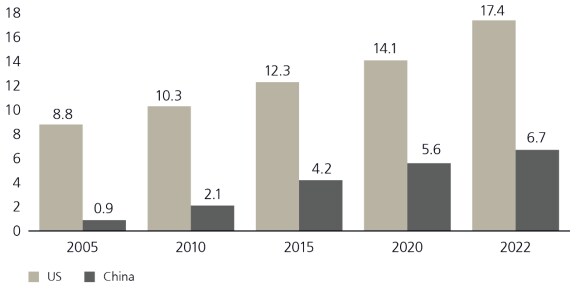Finance Summit Qatar
China’s role in the global economy in the decade ahead
China has evolved into a global leader over the past decades, but the country has now reached a crucial juncture

China has evolved into a global leader over the past decades, but the country has now reached a crucial juncture. Domestically, a diminishing demographic dividend and slowing economic growth raise the need to seek new growth drivers and move up the global value chain. Externally, geopolitical challenges flag risks of supply chain decoupling. As a result, China is shifting its policy focus to promoting sustainable growth in areas such as consumption, high-tech industries, and carbon neutrality. This should have a deep impact on its economy, society, and companies, and far-reaching consequences for the rest of world.
Global growth engine
China became the world’s second-largest economy more than a decade ago. The country’s nominal GDP reached nearly USD 18tr in 2022, further narrowing the gap with the US’s USD 25tr. China’s policymakers intend to double real GDP and national income per capita by 2035 from 2020, which implies a GDP compound annual growth rate (CAGR) of about 4.7% in 2021–35. If successful, its GDP per capita would exceed USD 21,000 by then, a significant increase from the current USD 12,733. China has been by far the biggest contributor to global growth over the last 10 years, and is set to remain the most important global growth engine in the years ahead. For 2023, we expect China to contribute around one quarter of global growth. Accordingly, even amid slowing activity due to both domestic and external factors, China’s economic role on the world stage remains crucial.
China's consumption market has much room to grow
China's consumption market has much room to grow
Household consumption in GDP, USD tr


